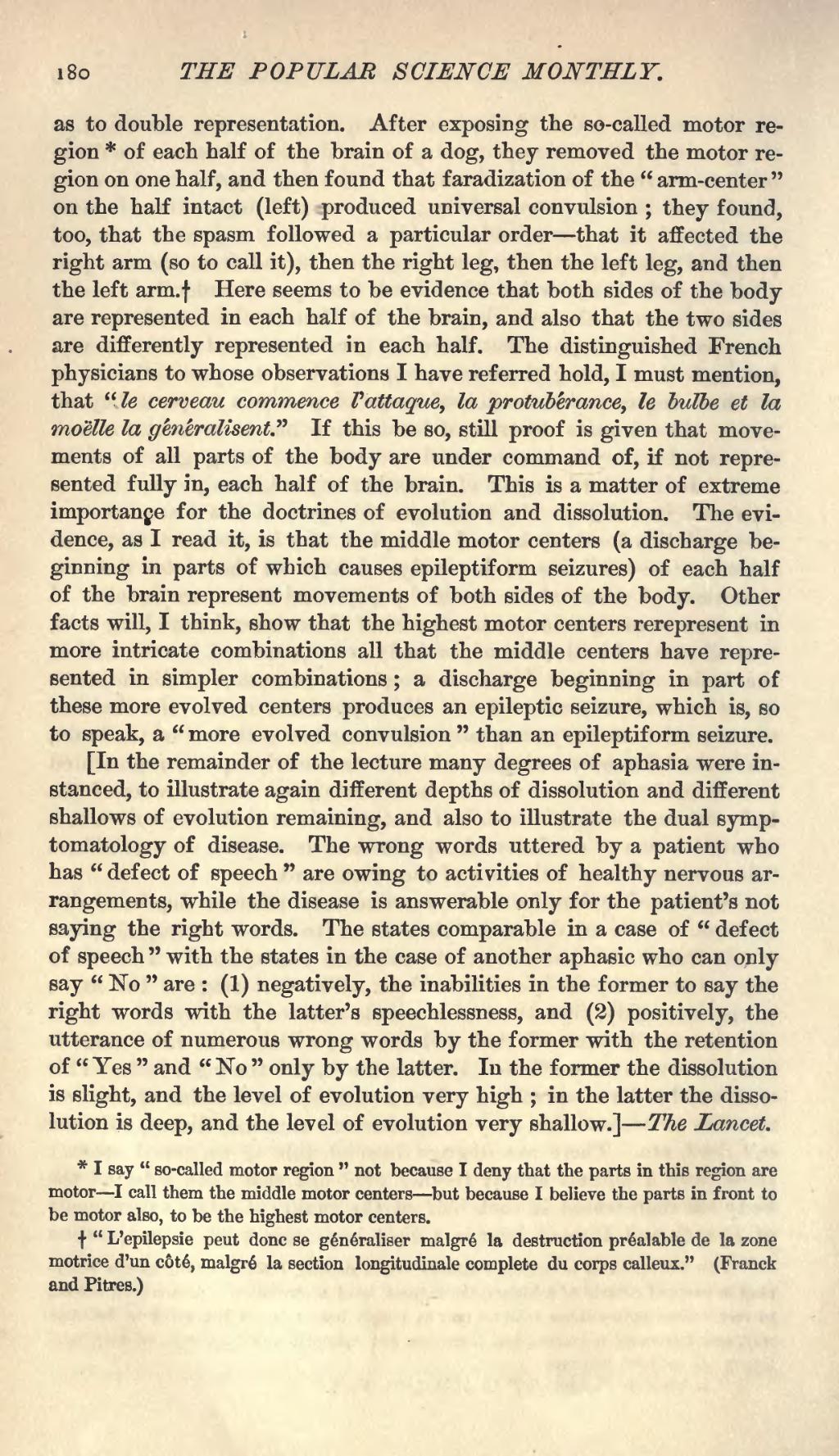as to double representation. After exposing the so-called motor region[1] of each half of the brain of a dog, they removed the motor region on one half, and then found that faradization of the "arm-center" on the half intact (left) produced universal convulsion; they found, too, that the spasm followed a particular order—that it affected the right arm (so to call it), then the right leg, then the left leg, and then the left arm.[2] Here seems to be evidence that both sides of the body are represented in each half of the brain, and also that the two sides are differently represented in each half. The distinguished French physicians to whose observations I have referred hold, I must mention, that "le cerveau commence l'attaque, la protubérance, le bulbe et la moëlle la généralisent" If this be so, still proof is given that movements of all parts of the body are under command of, if not represented fully in, each half of the brain. This is a matter of extreme importance for the doctrines of evolution and dissolution. The evidence, as I read it, is that the middle motor centers (a discharge beginning in parts of which causes epileptiform seizures) of each half of the brain represent movements of both sides of the body. Other facts will, I think, show that the highest motor centers rerepresent in more intricate combinations all that the middle centers have represented in simpler combinations; a discharge beginning in part of these more evolved centers produces an epileptic seizure, which is, so to speak, a "more evolved convulsion" than an epileptiform seizure.
[In the remainder of the lecture many degrees of aphasia were instanced, to illustrate again different depths of dissolution and different shallows of evolution remaining, and also to illustrate the dual symptomatology of disease. The wrong words uttered by a patient who has "defect of speech" are owing to activities of healthy nervous arrangements, while the disease is answerable only for the patient's not saying the right words. The states comparable in a case of "defect of speech" with the states in the case of another aphasic who can only say "No" are: (1) negatively, the inabilities in the former to say the right words with the latter's speechlessness, and (2) positively, the utterance of numerous wrong words by the former with the retention of "Yes" and "No" only by the latter. In the former the dissolution is slight, and the level of evolution very high; in the latter the dissolution is deep, and the level of evolution very shallow.]—The Lancet.
- ↑ I say "so-called motor region" not because I deny that the parts in this region are motor—I call them the middle motor centers—but because I believe the parts in front to be motor also, to be the highest motor centers.
- ↑ "L'epilepsie peut donc se généraliser malgré la destruction préalable de la zone motrice d'un côté, malgré la section longitudinale complete du corps calleux." (Franck and Pitres.)
